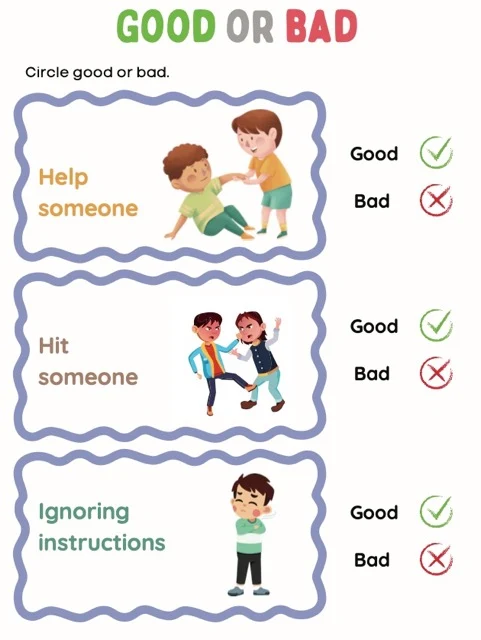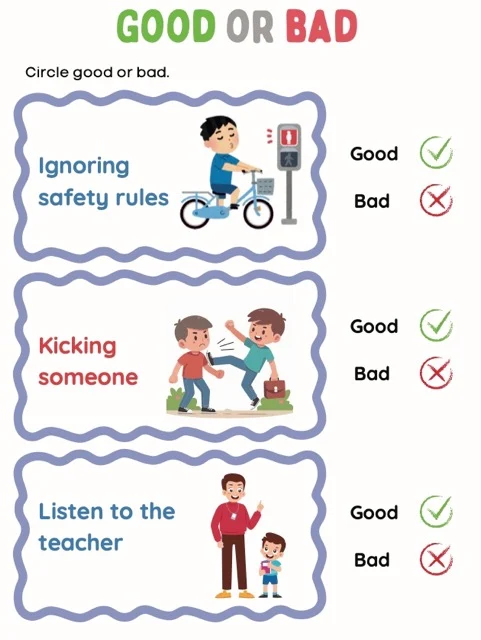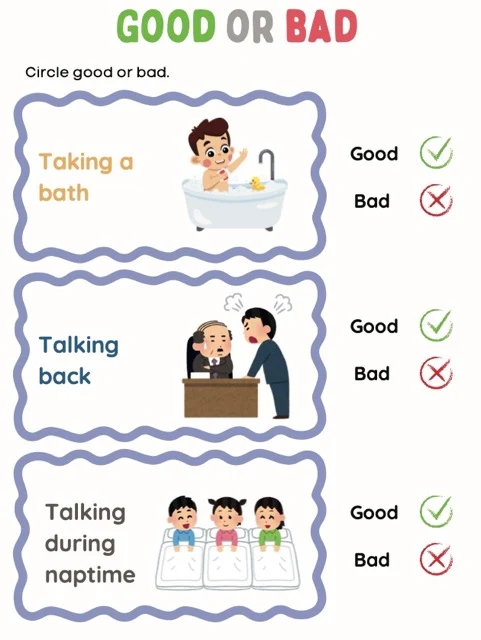The Social Construction of "Bossy"
These sources analyze the complexities of "bossy" behavior, arguing that its perception depends heavily on context and communication. Whether assertive behavior is seen as positive leadership or negative domination hinges on factors like collaboration, respect, and openness to feedback. The materials emphasize that effective communication and empathy can mitigate negative perceptions, while a lack thereof can hinder teamwork. Ultimately, the sources conclude that there's no single definition of "bossy," and its interpretation is highly subjective.
Bossy: Leadership or Domination?
Briefing Doc: Understanding "Bossy"
Main Theme: This collection of sources explores the nuances of "bossy" behavior, examining the factors that determine whether it is perceived as positive or negative.
Key Ideas:
●
Context is Crucial: Whether "bossy" is good or bad depends heavily on the situation. Assertive behavior can be beneficial in emergencies or leadership roles ("Testing Theme," "Understanding 'Bossy': A Study Guide"). For instance, a fire chief giving direct orders during a fire is necessary. Conversely, dictating plans to friends for a casual outing might be perceived negatively.
●
"Bossy" vs. Leadership: True leadership inspires and motivates through collaboration, unlike "bossy" behavior which relies on giving orders and expecting obedience without building trust ("Is 'Bossy' Good or Bad?," "Understanding 'Bossy': A Study Guide").
●
Perception is Key: "Bossy" behavior can be seen positively as leadership, assertiveness, and direction. However, it becomes negative when perceived as controlling, domineering, or disrespectful. ("Understanding 'Bossy': A Study Guide")
●
Communication is Key: Avoiding being perceived as bossy requires respectful communication: using polite language, active listening, and explaining reasoning behind decisions. ("Is 'Bossy' Good or Bad?")
●
Openness to Feedback is Essential: Being open to feedback shows a willingness to adapt and collaborate, mitigating negative perceptions. ("Understanding 'Bossy': A Study Guide")
Important Facts:
●
The sources provide no definitive answer on whether "bossy" is inherently good or bad. ("Is 'Bossy' Good or Bad?", "Testing Theme")
●
"Bossy" behavior can be detrimental in collaborative work environments, stifling creativity and teamwork. ("Understanding 'Bossy': A Study Guide")
●
Individuals can change perceptions of being "bossy" by consciously practicing respectful communication, collaboration, and empathy. ("Understanding 'Bossy': A Study Guide")
Quotes:
●
"A leader inspires and motivates others, often through collaboration and shared decision-making. 'Bossy' behavior, on the other hand, tends to focus on giving orders and expecting obedience without necessarily building trust or fostering a positive environment." ("Is 'Bossy' Good or Bad?")
●
"Context matters because what is considered 'bossy' in one situation may be appropriate in another." ("Understanding 'Bossy': A Study Guide")
●
"Explaining your reasoning demonstrates respect for others' opinions and helps them understand the rationale behind your actions, making you less likely to be seen as simply dictatorial." ("Understanding 'Bossy': A Study Guide")
Further Research:
●
The "Understanding 'Bossy'" study guide suggests analyzing societal factors contributing to different perceptions of "bossiness" in men and women.
●
It also encourages evaluating the long-term consequences of being perceived as "bossy" in personal and professional settings.
●
Exploring the role of empathy in mitigating negative aspects of "bossy" behavior is another potential research area.
Conclusion:
Understanding "bossy" requires a nuanced approach. The context, individual perception, communication style, and willingness to collaborate are all key factors in determining whether assertive behavior is viewed as positive leadership or negative domineering.
Is "Bossy" Good or Bad?
FAQ
1. What is the main topic being discussed in these sources?
The main topic being discussed is whether being "bossy" is a positive or negative trait.
2. Is there a clear consensus on whether being "bossy" is good or bad?
No, there is no clear consensus. The provided excerpts list "bossy" under both "Good" and "Bad" categories, suggesting that it can be interpreted in both ways.
3. What might make "bossy" behavior seem positive?
"Bossy" behavior might be seen as positive when it demonstrates leadership qualities, such as taking initiative, making decisions, and guiding others towards a goal. It can be associated with confidence, assertiveness, and a strong sense of direction.
4. What might make "bossy" behavior seem negative?
"Bossy" behavior can become negative when it's perceived as controlling, domineering, or disrespectful. If someone is seen as dictating to others without considering their input or feelings, the term "bossy" takes on a negative connotation.
5. Does the context of the situation matter when evaluating "bossy" behavior?
Yes, context is crucial. In some situations, assertive and directive behavior is necessary and appreciated, such as in emergency situations or when leading a team. In other situations, a more collaborative and inclusive approach might be more effective.
6. Is there a difference between being "bossy" and being a leader?
Yes, there can be a significant difference. A leader inspires and motivates others, often through collaboration and shared decision-making. "Bossy" behavior, on the other hand, tends to focus on giving orders and expecting obedience without necessarily building trust or fostering a positive environment.
7. How can someone avoid being perceived as "bossy" while still being assertive?
Being assertive without being bossy involves:
●
Respectful communication: Using polite language, actively listening to others' perspectives, and valuing their input.
●
Explaining your reasoning: Providing clear justifications for your decisions or requests, rather than simply issuing commands.
●
Being open to feedback: Being willing to adjust your approach based on feedback and recognizing that you don't always have the best solution.
●
Focusing on collaboration: Working together with others to achieve common goals, rather than dictating terms.
8. Can someone who has been labeled "bossy" change this perception?
Yes, it is possible to change perceptions. By actively practicing more respectful communication, collaboration, and empathy, individuals can demonstrate that they value others' opinions and are willing to work together effectively. Building trust and showing a genuine willingness to listen can go a long way in shifting negative perceptions.
Understanding "Bossy": A Study Guide
Understanding "Bossy": A Study Guide
Quiz
Instructions: Answer each question in 2-3 sentences.
1.
According to the sources, what is the primary factor that determines whether being "bossy" is perceived as positive or negative?
2.
How does the concept of leadership differentiate itself from simply being "bossy"?
3.
Provide a specific example of a situation where "bossy" behavior might be considered beneficial.
4.
Conversely, describe a situation where "bossy" behavior would likely be detrimental.
5.
Explain the importance of "context" when evaluating whether someone is being "bossy".
6.
Identify three key communication strategies that can help individuals assert themselves without appearing "bossy".
7.
Why is it crucial to explain your reasoning when making decisions or requests, especially if you want to avoid being seen as "bossy"?
8.
How can being open to feedback help someone avoid being perceived as "bossy"?
9.
Is it possible for someone who has been labeled "bossy" to change that perception? If so, how?
10.
In your own words, define what it means to be "bossy".
Quiz Answer Key
1.
The primary factor is how the behavior is perceived by others. "Bossy" behavior can be seen as positive when it's associated with leadership, assertiveness, and direction. However, it becomes negative when perceived as controlling, domineering, or disrespectful.
2.
Leadership involves inspiring and motivating others, often through collaboration and shared decision-making. "Bossy" behavior, on the other hand, focuses on giving orders and expecting obedience without necessarily building trust or fostering a positive environment.
3.
In an emergency situation where quick action is needed, a "bossy" individual might effectively take charge and direct others, potentially saving lives or preventing further harm.
4.
In a collaborative work environment, "bossy" behavior could stifle creativity and teamwork, leading to resentment and decreased productivity.
5.
Context matters because what is considered "bossy" in one situation may be appropriate in another. For instance, a fire chief giving direct orders during a fire is necessary, while a friend dictating plans for a casual outing might be seen as "bossy".
6.
Three key communication strategies are using respectful language, actively listening to others' perspectives, and being willing to explain your reasoning.
7.
Explaining your reasoning demonstrates respect for others' opinions and helps them understand the rationale behind your actions, making you less likely to be seen as simply dictatorial.
8.
Being open to feedback shows that you value others' input and are willing to adapt, fostering a more collaborative and less "bossy" dynamic.
9.
Yes, it's possible to change perceptions. By consciously practicing respectful communication, collaboration, empathy, and active listening, individuals can shift negative views and build trust.
10.
Being "bossy" means attempting to control or dictate others' actions and decisions, often without considering their input or feelings. It can involve giving orders, being overly assertive, and lacking respect for others' autonomy.
Essay Questions
1.
Analyze the societal factors that might contribute to different perceptions of "bossiness" in men and women.
2.
Evaluate the potential long-term consequences of being perceived as "bossy" in personal and professional settings.
3.
Discuss the role of empathy in mitigating the negative aspects of "bossy" behavior.
4.
Compare and contrast the characteristics of effective leadership with those of "bossiness."
5.
Examine how cultural differences might influence interpretations of "bossiness" in different societies.
Glossary of Key Terms
Assertive: Confidently expressing one's opinions and needs while respecting the rights of others.
Bossy: Behaving in a domineering or controlling manner, often without regard for others' feelings or opinions.
Collaboration: Working together with others to achieve a shared goal.
Context: The circumstances surrounding an event or situation, influencing its interpretation.
Dominating: Exerting control or influence over others in a forceful or oppressive way.
Empathy: The ability to understand and share the feelings of others.
Feedback: Information provided about one's performance or behavior to help them improve.
Leadership: The process of inspiring and motivating others to work towards a common vision.
Respectful Communication: Interacting with others in a polite and considerate manner, valuing their perspectives and opinions.



















